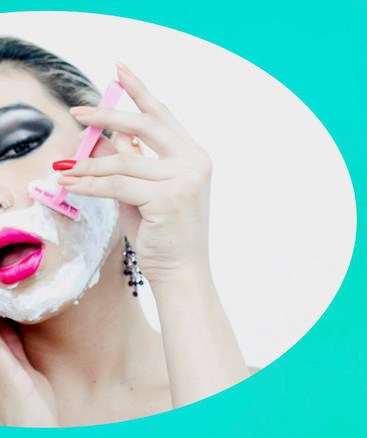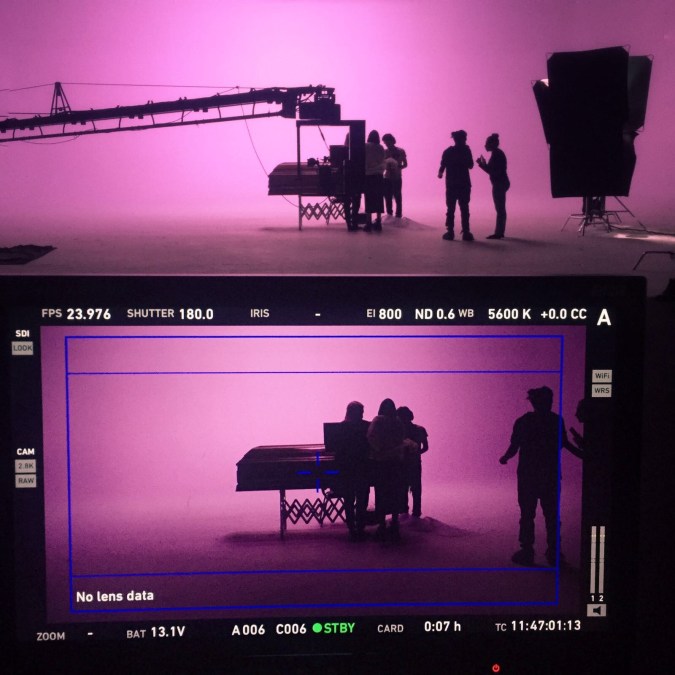There’s a boldness to titling a documentary #Mickey, but Betzabé García, who directed the powerful Sinaloa-set doc Kings of Nowhere, has an ambitious idea in mind for her sophomore feature. She’s offering up a profile of Mickey Cundapí, a Mexican YouTube star who won the Miss Sinaloa Gay pageant at 18. Born in the same region García mined in her dreamy first feature, Mickey has long used social media as a way to explore his gender and sexual identity. But as he comes into his own, he’ll have to reconcile his digital footprint with the life he wishes to live offline.
García, who just launched a Kickstarter campaign to help fund this project, is clearly looking to create a documentary that befits her subject. In the promotional teaser for #Mickey, you can already see fresh 90s-era effects adorning a flick that will be equal parts fabulous memoir and meditation on digital identities. In one instance, when Mickey and Betzabé rifle through old home movies of “Miguel Angel,” Mickey – in a face mask no less – asks, “Soy el mismo, no? O la misma? Quién sabe qué?” That slippage between gender pronouns and the decision to not want to settle the distinction looks to be central to a documentary unlike no other.
We caught up with García days after the Kickstarter campaign went live to chat about this most curious of projects, why #Mickey is a particularly timely story to be telling in this social media-driven world we’re living in, what it can tell us about growing up in Sinaloa when you don’t quite live within known labels, and why she’s so keen on breaking down old-school models of identity. Check out highlights from our chat below and be sure to be visit the film’s crowdfunding campaign to show your support.
This project will only be funded if it reaches its goal by June 9, 2017 at 4:48 p.m. ET.
On How She First Met Mickey
I first was aware of Mickey when I was in high school. The first time I saw him he was wearing makeup and he was just 11 years old. We both went to the same Catholic school in Sinaloa—which as you know, is one of the most violent regions in the country. In Mexico, it’s got the second highest rate of homophobic hate crimes. So within this very oppressive environment, Mickey was just being himself. I remember the outrage he caused at school. From there I started following him, as it were. I was fourteen at the time. That’s when he started uploading videos to YouTube. He started making these really funny videos like, “What should I take to school? Don’t forget your Kotex and your slippers!” Everyone at school was like, do his parents not say anything? How does he get away with posting these things? What I didn’t know was that, at the time, he was cutting himself in his room. He dressed all emo, too—he was dealing with a lot of problems with his family and with the school itself. So for 10 years I followed him via social media. I didn’t really know him, I was more of a stalker, really. I’d look forward to his latest video or his latest uploaded pic.
On Realizing She Had a Project in Her Hands
Then he moved to Mexico City and that’s when I asked him to share with me all the footage he surely must have kept from all those years ago. And he did—and I found a treasure trove of videos, especially some that were all too private, of things we rarely share with anyone else. To me, all this footage spoke to this generational issue right now which is all about how it is we portray ourselves for others on social media. How is it that we build our identity across these various self-portraits and “video-selfies”? So I asked him to let me make something of all these videos. So I created this short fiction film with bits and pieces from everything he’d shared with me. Mickey was changing at every turn, so there were videos that were super sexual, some were super intimate, and I took them all to show, in a way, how he was coping with being what we would now call “genderfluid.” But you know, back then, he had no language for that, he was just playing with his gender and sexual identity. You know, I’d see him switch pronouns. Somedays he’d be a he. Others he’d be a she. He’d changed his look, he changed his sexual preferences, liking boys or girls, or both. It was this constant search which is still going on. That was all there in that footage and I used it in this short fiction film—”fiction” because I didn’t really know his story so I was just building a story around it, even taking footage of my own brother and using it as the guy Mickey was pining for. Which added another layer, especially because my brother is super homophobic. I showed it to Mickey and we both loved this idea of playing around with archival footage.
On Wanting to Explore Identity in a Selfie-Driven World
Eventually, we moved in together and we were roommates for close to 3 years. During that time I got to really get to know Mickey. Not this persona I’d seen via social media. That’s when we landed on the documentary’s main theme: the search for identity. Which is really tricky, you know? But it wasn’t just about this sort of search for a kind of gender identity. It was more about seeing Mickey in this new world, navigating the differences between this character he’d created in social media and the one that I got to meet while living together. That’s when we talked about Sinaloa, about how he remembered his childhood there. One day I remember him telling me, “I don’t recall seeing any narcos in Mazatlán” and I was like “What?! How could you miss that?” I realized then that Mickey had somehow blacked out certain aspects of his upbringing and that could dig up with the help of these videos he’d taken. So I got him to record himself with a webcam responding to times when things about his past would come up. So Mickey tells me, in these recorded sessions, about the time he set fire to his house, when he decided to first start using makeup. And we have conversations about all of that.
On the Film as Therapy, Sort of
In one of those conversations I asked him whether he’d like his father to see what we’ve been working on. He agreed. So I edited pieces of that and we showed it to his dad, and when he sees it, he responds yet again in another different way, adding another facet to the Mickey people think they know. So the film is built on all these various layers. It begins with these seemingly banal moments, these YouTube clips and social media videos about how we wish other people saw us—always happy, of course!—but that’s just one layer about what goes on, which is particularly new right now where everyone has their own platform. So #Mickey is really about how our identities are built by these various self-presentations on social media. And it’s anchored by these three narrative strands: there’s the old archival footage, then the web-cam moments about reflecting on those old videos, and then there are moments we’ve chosen to fictionalize on set. That’s why the film is really about finding an identity within all these various gazes.
On the Importance of Telling This Story in 2017
Mickey’s story speaks to a lot of people who aren’t really looking to fit into one box or another, in one gender label or another. But who are finding ways, through these online communities, of saying “This is who I am! Accept me as I am.” And that inspires change. There are all these times when I’d turn to Mickey and ask, “What are you feeling like today?” And he’d say, “Like a pony!” And he’d trot around the apartment! The thing about dealing with sexual identity issues is to let go of all our preconceived notions and boiling it down to questions of “who am I?” and “what do I like?” Those are two separate things, and they can change day to day. Today I may like this and tomorrow I may like that—and it’s fine if you mix that up, or even if you don’t! There shouldn’t be an issue here in terms of who you are and who you like. We should just be accepting of one another. And I think films like #Mickey can reflect the kind of journey of self-acceptance that we should see more of, especially when they start with what seem like super trivial things like selfies and vlogs.
This interview was conducted in Spanish and translated into English by the author for Remezcla.





